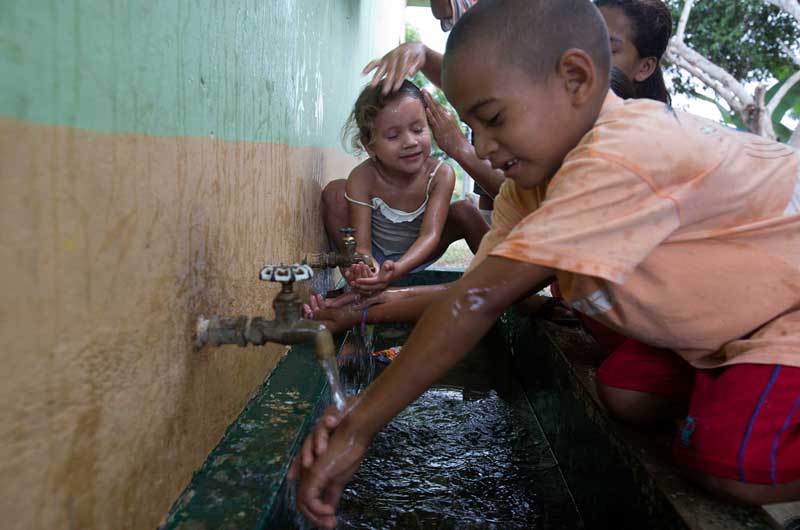The provinces with the least access to electricity, water and garbage collection are in the Amazon. The lack of services is also more prevalent in rural areas.
The figures are alarming. A study by the Ecuadorian Institute of Statistics and Censuses (INEC) reveals that 31.7% of Ecuadorian households do not have access to basic services.
In other words, this means that a third of families do not have water, electricity, garbage collection and the proper treatment of feces.
INEC figures, collected thru the end of 2021, detail that in the last four years there was a minimal increase in people accessing basic services.
In 2018, 66% of Ecuadorian families had these services, while in 2021, the figure rose to 68.3%.
According to INEC research, rural areas are the ones that suffer the most from this problem. Barely 43.8% of these households have basic services. A figure that is well below the 79% access that families have in urban centers.
Patricia Decker lives in Monte Sinai, a suburb of Guayaquil that is synonymous with poverty. She is part of this percentage of Ecuadorians without access to basic services.
In her neighborhood, for example, there is no drinking water or sewerage. Like her neighbors, Patricia is forced to buy water from tankers that travel through the area. Each 55-liter tank costs $0.80 and is used for cooking, bathing and for the consumption of her, her three children and her mother.
How does this lack of basic services affect health? The head of the Ecuador Secretariat Grows Without Child Malnutrition, Erwin Ronquillo, explains that this type of deficiency is one of the main factors of child malnutrition.
To combat this problem, the Government foresees an investment of $330 million in 2022 and a budget of $1.765 billion thru 2025.
Garbage collection, the service with the least coverage
Garbage collection is the basic service with the least access for Ecuadorian families.
INEC data indicate that urban 87.2% of households have spaces to deposit garbage that will then be transported by municipal vehicles to the sanitary landfills or dumps in each city.
In rural populations, on the other hand, this percentage only reaches 59.2%.
Another service that registers low coverage, in relation to the others, is access to water. About 88.2% of families, according to the INEC, are supplied with water from a connection that belongs to the public network.
The entity clarifies that this supply can be drinking water or that which has not had any treatment.
Electricity, on the other hand, is the basic service to which Ecuadorian households have the greatest reach. Penetration is 99.2%.
Provinces with fewer basic services
The Amazonian provinces of Morona Santiago and Orellana are the ones with the least access to basic services. In these two provinces, less than half of the families have water, electricity, garbage collection and feces treatment.
In Morona Santiago, for example, the figure barely reaches 32.4%, while in Orellana it is 33.4%.
Other provinces that also have low coverage are Los Ríos and Esmeraldas, both located on the Ecuadorian coast.
In the first case, the percentage is 35.4% and in the second, 40.4%.
On the other side of the coin are Pichincha, with more than 93% access to basic services, and Azuay, with 85.9%.
Montuvios, with less access
The Montuvio people, with only 35% of households that have access to basic services, is the ethnic group that lives with the most difficulties of this type.
Not far behind are the indigenous people, since only 45% of their families have water, electricity, garbage collection and feces treatment.
According to the INEC, the ethnic groups that present the best indicators are people who consider themselves white, with a coverage of 76.1% , and mestizos, with 72.6%.


I just wonder what these statistics would look like if we magically turn the clock back to the pre-Correa era AND government corruption would be lowered correspondingly in time?
(…. dream on!)